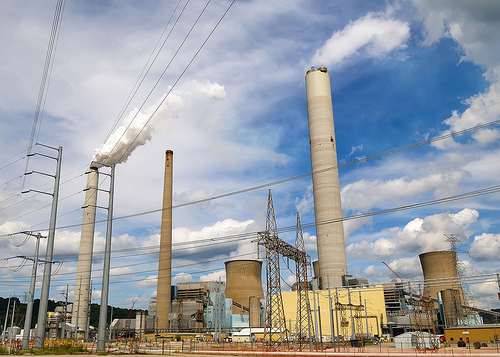On March 11, the Trump Administration issued its budget proposal for federal Fiscal Year (FY) 2020 (October 1, 2019 through September 30, 2020), entitled “A Budget for a Better America: Promises Kept. Taxpayers First.” The proposal includes a 31% cut in the Environmental Protection Agency (EPA) budget, from $8.28 billion in FY 2019 (under a Continuing Budget Resolutions rather than a fully-new federal budget), to $6.07 billion for FY 2020, with corresponding personnel cuts from 14,376 full-time-equivalent employees (FTE) to 12,415. (these are numbers for EPA in the government-wide budget from the Office of Management and Budget (OMBB) summary of the entire budget proposal, and EPA provides additional details on its own website).
Read MoreAudit, Compliance and Risk Blog
Tags: Business & Legal, Environmental risks, Environmental, EPA
Another Round of EPA and Corps of Engineers Proposals to Redefine “Waters of the United States”
Posted by Jon Elliott on Tue, Feb 26, 2019
On December 11, 2018 the Environmental Protection Agency (EPA) and the U.S. Army Corps of Engineers (Corps) jointly proposed to revise their regulatory definitions of “waters of the United States”, applying authority under the Clean Water Act (CWA). CWA does not define this term clearly, so after decades of rulemakings and litigation, it remains in dispute. Generally, Democratic presidents and the judges they appoint tend to support geographically and semantically broad applications, while with Republican presidents and the judges they appoint tend to take narrower views. The latest proposal would narrow the definition, reversing Obama-era rules adopted in June 2015, and presently in effect in 22 states based on the present status of ongoing judicial appeals (I summarized the 2015 rules, and the litigation leading up to them here and the Trump-era EPA’s 2017 proposal to roll back the 2015 revisions here). The agencies characterize this narrowing as an increase in certainty for stakeholders, accomplished by eliminating some of the site-specific discretion that the 2015 rules provided to permit writers. Because of the government shutdown, this latest proposal was not published in the Federal Register until February 14, 2019.
Read MoreTags: Environmental risks, Environmental, EPA, effluent, clean water
California Requires Pharmaceutical and Sharps Waste Stewardship
Posted by Jon Elliott on Tue, Jan 29, 2019
Beginning January 1, 2019, a new California law establishes extensive requirements for proper management of waste pharmaceuticals and “sharps.” These new provisions complement – but aren’t actually well-connected to -- medical waste management requirements (I outlined typical state-based requirements here), and workplace provisions to protect workers from “bloodborne pathogens” that may be present because of health and medical procedures and the wastes they generate (I discussed OSHA’s “BBP” Standard here). The rest of this note summarizes these new requirements, adopted by Senate Bill (SB) 212 (Jackson).
Read MoreTags: Health & Safety, California Legislation, Environmental risks, Environmental, Hazcom, pharmaceuticals
EPA Will Aggregate “Substantially Related” Activities When Considering “Project” Thresholds For Pre-Construction Permit Review
Posted by Jon Elliott on Tue, Jan 15, 2019
If you’re contemplating significant changes at a facility that’s regulated as a “major source” under the Clean Air Act (CAA), you’d better figure out whether those changes will “modify” the source enough to trigger significant pre-construction review and permitting by the US Environmental Protection Agency (EPA) or its state or local delegee. The likely answer to questions like yours has changed with CAA amendments and regulations over the decades. EPA has just changed them again, after ending a decade long year delay of a regulatory “interpretation” published in the last week of George W. Bush’s presidency, and stayed by the Obama-era EPA throughout his presidency, and now reaffirmed and activated by the Trump-era EPA.
Read MoreTags: Business & Legal, Health & Safety, Environmental risks, Environmental, EPA
On October 29, a large multi-sector group of organizations announced a major initiative to eliminate plastic waste and pollution - the New Plastics Economy Global Commitment. The group is sponsored by the Ellen MacArthur Foundation, and intends to respond to dire projections of the environmental implications of plastic waste with. Informational materials highlight a projection from the United Nations Environment Program (UNEP) that more than 8 million tons of plastics end up in the world’s oceans annually, and that if present trends continue there will be more plastic than fish in the oceans by 2050.
Read MoreMore Jurisdictions Targeting Short-Lived Climate Pollutants
Posted by Jon Elliott on Tue, Dec 11, 2018
Although carbon dioxide (CO2) is the most common and most-discussed greenhouse gas (GHG), it is by no means the only one. And on a per-unit basis, it is by no means the most potent GHG either. Air quality agencies and climate change scientists also focus attention on so-called “short-lived climate pollutant (SLCP)” means an agent that has a relatively short lifetime in the atmosphere, from a few days to a few decades, and a warming influence on the climate that is more potent than that of carbon dioxide. Individual jurisdictions have addressed individual SLCPs, but comprehensive approaches have been limited.In 2014, California legislation assigned that state’s Air Resources Board (ARB) to adopt a SCLP Reduction Strategy (I wrote about the legislation and 2016’s draft strategy here).
Read MoreTags: Environmental risks, Environmental, Greenhouse Gas, ghg, climate change
United States Government Quietly Releases Dramatic New Recommendations For Combating Climate Change
Posted by Jon Elliott on Tue, Dec 04, 2018
While domestic climate politics in the U.S. and Canada generate hot air about the reality and urgency of climate change, climate science proceeds largely on its own pathways, and climate policies to reduce greenhouse gas (GHG) emissions are being proposed and developed by a wide variety of entities. On November 23 – often referred to as “Black Friday” by retailers and shoppers in the U.S., regardless of their attitudes about global warming – the U.S. government’s U.S. Global Change Research Program (USGCRP) delivered urgent recommendations for aggressive policies. This Fourth National Climate Assessment (NCA4) builds on last year’s Climate Science Special Report (which I wrote about here).
Read MoreTags: Business & Legal, Environmental risks, Environmental, Greenhouse Gas, ghg, climate change
On October 24, the US Chemical Safety and Hazard Investigation Board (which uses the truncated acronym CSB) issued a “Call to Action: Combustible Dust” seeking information about what it has long considered a major industrial hazard. Since 1980 CSB has identified hundreds of industrial accidents involving dust that have injured nearly 1000 workers and killed more than one hundred. In 2006 CSB issued 4 formal recommendations to the Occupational Safety and Health Administration (OSHA) to enhance that agency’s regulation of occupational hazards from combustible dust – particularly from possible fires or explosions, with mixed responses.
Read MoreTags: Employer Best Practices, Health & Safety, OSHA, Environmental risks, Environmental
Organizations with facilities that may be subject to routine water infiltration or leaks, or sudden flooding from hurricanes or other events – should consider both sets of information.
Mold Basics
Molds and other fungi are both ubiquitous and plentiful--they have been estimated to make up a quarter of all the biomass on the planet. Molds are found almost everywhere, and can grow on just about any surface, as long as moisture and oxygen are available.
Read MoreTags: Employer Best Practices, Health & Safety, Employee Rights, Environmental risks, Environmental, mold
EPA Proposes To Replace Obama-Era Rules For Coal Fired Power Plants
Posted by Jon Elliott on Tue, Oct 16, 2018
The Trump-era Environmental Protection Agency (EPA) has proposed to repeal and replace another of the Obama-era EPA’s signature efforts to reduce greenhouse gas (GHG) emissions. EPA has now proposed an “Affordable Clean Energy Rule”, to replace the “Clean Energy Plan” adopted in 2015 but stayed by litigation. The new rule softens the mandates in the earlier rule, and offers states more flexibility to design their own efforts to control greenhouse gas (GHG) emissions from existing fossil fuel-fired electricity generating units (EGUs) by eliminating Clean Power Plan requirements that states consider operational changes “outside the fenceline” of the regulated EGUs.
Read MoreTags: Environmental risks, Environmental, EPA, Greenhouse Gas, ghg










